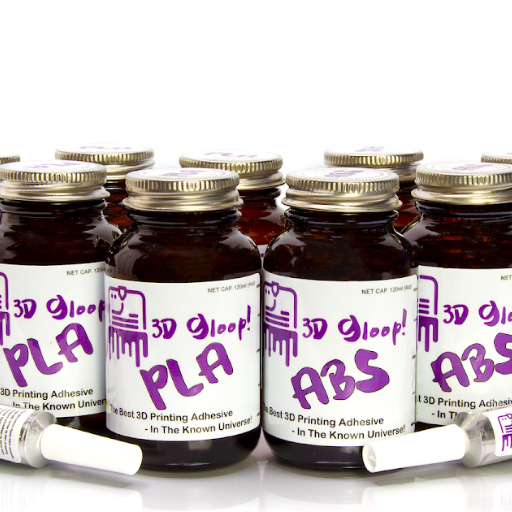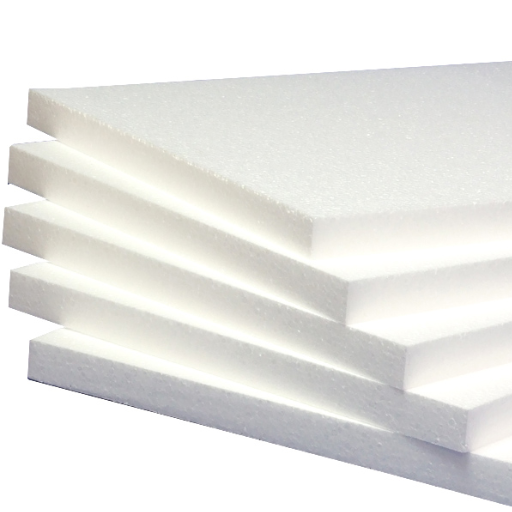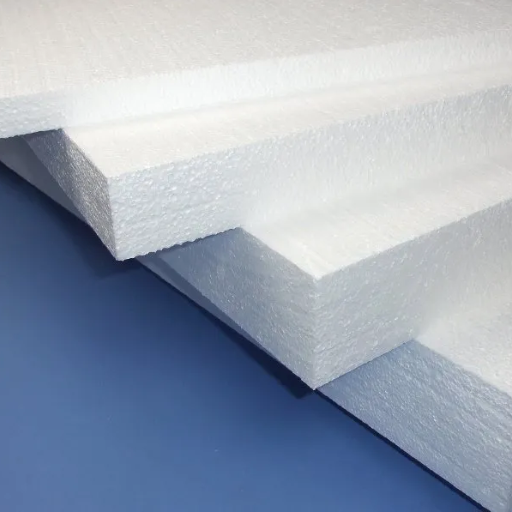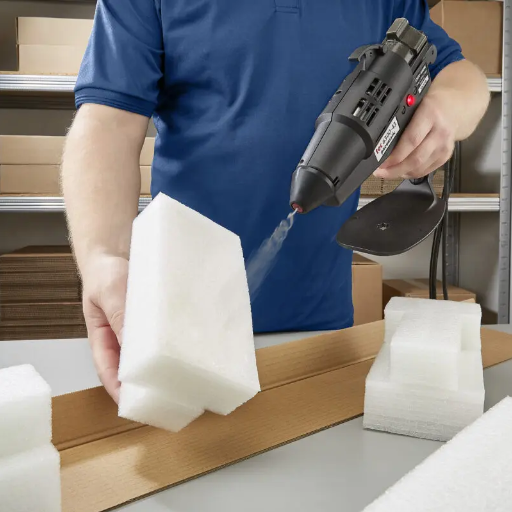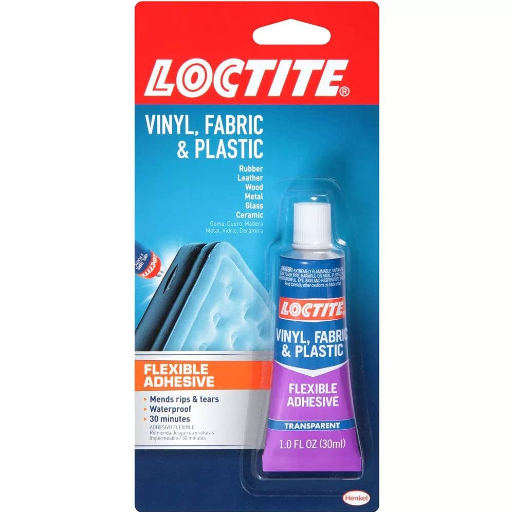PLA, or Polylactic Acid, is one of the most popular materials in the world of 3D printing due to its cost-effective and easy printing properties. Integrating 3D printed components into a larger system requires precision, which oftentimes requires glued PLA parts for a fully functional and robust final assembly. Whether it involves integrating multi-part designs, repairing broken models, or modifying existing prints, knowing how to properly join PLA will make a huge difference when it comes to strength and precision. This guide focuses on tested methods along with their respective tools and adhesives to deal with poorly made bonds or messy joins while ensuring professional results. By the end, you’ll be able to confidently and precisely glue the parts together and expand your creativity in 3D printing projects.
What is the Best Glue for PLA?

Cyanoacrylate (CA) adhesive or super glue is best used with PLA parts. CA glue is effective because it is readily available and provides a strong bond in a short period of time. For smaller applications as well as for pieces that bear a load and require more strength, plastic-specific epoxy adhesives are better suited as they are more abrasion resistant. Look for specific PLA or 3D print glue if the joins need to be seamless because those are specifically designed for such tasks. Like with any adhesive, clean and dry surfaces ensure the best results.
Understanding PLA and Its Properties
Plolactic Acid (PLA) is widely used in 3D printing due to the fact that it is an eco-friendly thermoplastic.” It is made of renewable resources like sugarcane and cornstarch. PLA is also compostable biodegradable. PLA has a melting point of 190 to 220 degrees Celsius and can be used with most 3D printers as it doesn’t require a slot. Its low melting point makes PLA effortless to 3D print as many personal printers do not have to be heated. As was mentioned earlier PLA cannot be used in high temperature applications.
From a engineering perspective, the tensile strength of PLA is average and the flexibility is low making it more brittle than thermoplastics such as ABS. Because of this brittleness, PLA is most compatible with prototyping preferred non-load bearing components instead of functional parts that would require impact resistance. Furthermore, its density, which is approximately 1.25 g/cm^3, grants remarkably surfaced light models. For unique attribute applications, PLA can be blended with carbon fiber or metal particles to increase strength for the intended purpose. Understanding such facts ensures that PLA can be optimally applied where its properties are most useful.
Top Adhesives for PLA: A Quick Overview
Working with PLA requires choosing the right adhesive carefully as it can affect the quality and the longevity of the joined parts. One of the most effective options is super glue (cyanoacrylate) as it bonds very quickly and works best with PLA’s surface properties. Super glue is best for small applications. Where strength and gap-filling capabilities are needed, epoxy adhesives provide an excellent alternative PLA binder glue. For larger assemblies or those needing flex, hot glue provides a fast bond along with a measure of flexibility during setup. Acetone is not an adhesive, but it can be employed to soften PLA ever so slightly for weld-like bonds between parts. It does require caution because, compared to other materials, acetone is not as effective. Focused surface cleaning ensures a strong bond for any adhesive option.
Super Glue vs. Epoxy: Which is Better?
Both super glue and epoxy have practical use cases, but super glue performs better when speed is critical. Super glue is easily applied with little prep, making it perfect for rapid bonding. Small scale repairs are not a stretch, but non-porous materials like metals, ceramics, and plastics are a best friend. It’s curing time is mere seconds, which is beneficial when immediate assembly is critical. It also singles out in quick turn-around jobs. One downside, setter glues sheer strength is undermined when it comes to any form of stress and vibration, load bearing condition, or hostile environment.
Unlike super glue, epoxy provides two components that are two part adhesives consisting of resin and hardener. Uniting these parts culminates in a chemical reaction which forms a much stronger and more durable bond. While super glue does poorly with enduring outdoor conditions, epoxy stands out as better suited for heavy duty work. Another perk is that it is much more versatile as it offers a wider array of materials such as glass wood, plastics, and many more. These perks, however, do not come without downsides. Epoxy is much slower requiring additional prep time and precise measurements. As a result, this can place a constraint on any bound projects due to steep time limits.
The decision for super glue versus epoxy ultimately comes down to how the person is using the adhesive, specifically in terms of the speed versus durability required for the project. While superglue offers lighter, easier fixes, epoxy works best for projects needing stronger, long-lasting bonds.
How to Properly Glue PLA Parts Together?
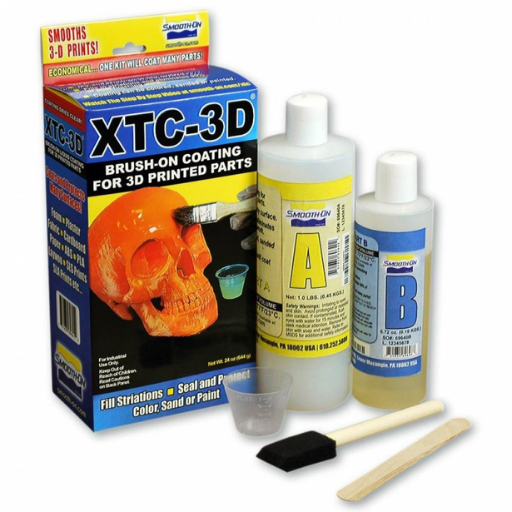
For effective joining of PLA parts, follow the below steps:
1. Clean the surface. Ensure every surface to be glued is neat and does not contain any dust, grease or any other external substances. Isopropyl Alcohol should be used in cleaning so that all the contaminants are removed.
2. Edge Sanding: The sides as it is known should be moderately sanded with fine ( 200-400 grit) sandpaper to give it a rough surface.
3. Using the Right Glue: Look for a quality super glue (cyanoacrylate) for fast joining or epoxy resin for long lasting, strong joints. For stronger bonding for larger, easier or complex assemblies, always go for epoxy.
4. Correct Application of Glue: Place a very thin, uniform layer of glue on the bonding surfaces. Do not apply too much as this can distort the joint.
5. Aligning the parts: Align the parts with each other and firmly press them together. Super glue will set in 30-60 seconds while epoxy will take longer so retain the pressure until epoxy starts to set.
6. Strong joints need the glue to be clamped and the instructions to be followed needed my glue curing (which is 24 hours for epoxy).
Using these steps can be very beneficial for bonding, providing accurate results for the PLA parts.
Preparing the PLA Surfaces for Adhesion
To make sure a strong and uniform adhesive bond is obtained, PLA surfaces must be properly prepared. Begin with a clean-up at the joint surfaces; harmful substances like oils, dust, or any remnant bits of material that may clog up adhesion pathways must be removed. Use isopropyl alcohol (IPA) not less than 90% concentration, and take care to use it with a lint-free cloth, because the surface must dry completely after cleaning. IPA is most effective when over 90% concentrated. Wiping with sandpaper in the bonding surfaces, e.g., 220-400 grit will increase adhesion because of roughening the surface of the adhesive interface. Surfaces should be cleaned again after all abrasion operations to remove loose dirt. For some specific applications, PLA-specific surface primers can be added as they increase adhesion through chemical processes that make bonding surfaces more favorable for adhesion. It is important to note that enhanced static strength with properly prepared surfaces improves bond durability.
Best Practices for Clamping and Holding
Precision and uniformity are crucial when bonding PLA components to ensure optimal results. Moreover, the type of clamps selected should not create areas of stress concentration being too tight or slack, as they must also be uniform. Soft-faced clamps or clamps that achieve an even distribution of pressure throughout the bonded interface are preferable to maintain the PLA surface integrity. Furthermore, moderate and simultaneous pressure across the parts is important; if too much force is applied, parts may be crushed which can lead to the bond being choked and rendered useless.
Due to the intricate nature of the assembly, align the parts utilizing jigs or custom mounts to improve visio-mechanical alignment while also aiding in the minimization of post-process alterations. Upon completing the assembly, avoid disturbing it for as long as the adhesive instructions specify as this will require the bond to be fulfilled repeatedly. Moreover, temperature greatly affects adhesion; secure clamping of assembly should be performed in environments where the temperature meets the requirements of the adhesive as high and low extremes can hinder the curing stage. Following these measures will enable the assembled components to achieve a resilient bond and function beyond the intended operational life.
Can You Use Solvent for Gluing PLA?

Though some plastics can be joined together using solvents, PLA is not one of them. PLA is resistant to chemical solubility in adhesives or solvents. This means that PLA is unaffected by acetone, whereas something like ABS is not. Cyanoacrylate glues (super glues) or special plastic glues are the best choices for effectively joining PLA. Those glues will yield the best mechanical bond instead of a chemical one.
What Types of Solvents Work with PLA?
Polylactic Acid (PLA) is a commercially biodegradable thermoplastic with some resistance to chemicals and solvents, thus possessing some degree of limited solubility unlike other polymers. Solvents do exist that will interact with PLA under certain conditions. A very useful chemical solvent, ethyl acetate, is capable of softening PLA, making it helpful for purposes like surface smoothing or joining parts. Other tetrahydrofuran (THF) and Dichloromethane (DCM) have also been noted of dissolving PLA, but the former two have very toxic and health-hazardous effects if not treated with caution. Careful attention must be paid for exposure through ventilation when dealing with ethyl acetate/THF solvents. The environment and users must be safely handled when working with ethyl acetate and THF DCM, making understanding of their polymer plastic behavior with the solvent crucial for controlled surface treatments.
How to Use Solvent to Weld PLA Parts
Care and precision steps when using a solvent to weld PLA parts, a well-defined approach must be taken. When choosing a solvent to work with, picking reasonable options, such as acetone or ethyl, would suffice. Both have shown high efficiency when placed against PLA. Put on a ventilated area as protected goggles and gloves will be necessary due to dangerous traces of PLA fume present in the air.
Dust and grease are no longer able to interfere with the proposed bonding, allowing for surface cleaning. The bridge joint area applies a thin film of solvent with the help of fine brushes. Over applying will lead to uncontrollable results. After the solvent has been applied, the pieces should be pressed together gently before securely holding them to avoid any misalignments or movements. PIEZO, by Acton, describes how attachments are merged “with momentary evaporation in a plasticized state” meaning during the process of dying on cleaning solution, the PLA surface will be softened.
Minimal strength to hold each component can improve bonding even more during the drying phase, which can take from minimum of 10-15 minutes depending on the surrounding temperature as well as the type of adhesive/solvent. Final set and utmost strength will take some several hours, during which the item welded should be treated with care such as not jostling during the wait period. Always properly discard remnants of adhesives and solvents and follow the law of the nearest region to best sustain nature.
What is the Strongest Way to Glue PLA?

Relying on cyanoacrylate (more commonly known as super glue) or a two-part epoxy remains the most effective way to glue PLA. Small Cyanoacrylate adhesives, for example, are best for small and precise joins because of their strong and quick-setting bond as well as minimal prep work. However, for the best results when gluing larger surfaces, two-part epoxy is the best choice due to unparalleled tensile strength and stress resistance. Either way, all surfaces must be clean, dry, and lightly sanded to enhance each adhesive’s bond prior to application. Lastly, the optimal promise requires the parts to be straight as well as sufficient curing time as dictated by the adhesive’s manufacturer.
Comparing Strengths of Different Adhesives
Super glue is commonly used on several materials. Its performance, however, differs greatly dormant depends on material, moisture, or weight bearing capabilities of the two surfaces. For example, super glue works best on smooth surfaces such as plastic or metals as it bonds effortlessly. Yet it’s inflexible nature makes it vulnerable to extreme temperatures and moisture.
Polyurethane adhesives, on one hand, have the multi-purpose application due to their high tensile strength and great resistance to water and chemicals, which makes them useful indoors and outdoors. Epoxies are known to have the best structural bonding. Most of the time they are the best adhesive for heavy loads, heat, or solvents for long periods of time. PVA (polyvinyl acetate) glues, the common wood-working glue, have good shear strength but are poorly resistant to moisture and heat.
The latest research shows that hybrid adhesives, specifically those with silicone and polyurethane combination, are emerging due to their capability of retaining adhesion to a wide range of materials and dynamic stresses. This is an example of the many efforts toward innovation and development of adhesives to fit modern need.
How to Achieve a Strong Glue Joint
To bond porous objects, it is best to use adhesives that are strong with low viscosity. An effective joint will be achieved with an appropriate adhesive material and method while maintaining correct alignment during the initial adhesion stages, as long as a non-rearranging force is applied.
Picking the right glue is crucial to effectively bring together two or more materials. New developments in glue technology have introduced some formulations that can work well under specific conditions. For example, cyanoacrylate glues may be fantastic for quick bonding on non-porous surfaces, but they might need accelerators to aid curing on difficult surfaces. Also, most epoxies and other structural adhesives provide exceptional shear and tensile strength of glued parts for support constructions.
Always follow the instructions given by the manufacturer concerning the recommended quantity of the adhesive to be used, the curing and the working temperature of the bond. As with any fastening technique, the bond joint can be weakened by over-application as well as under-application of the adhesives. In the same way, failure to provide adequate curing time will result in slippage and other failures. During the curing time, fixtures or clamps should also be applied externally to hold the joint in position, providing adequate pressure and supporting adequate alignment for the components being bonded to expect a reliable bond. These goals can be achieved by combining proper preparation techniques with the latest adhesive technologies tailored for a diverse range of industrial and consumer needs.
Can You Use Gorilla Glue on PLA?

Yes, Gorilla Glue can stick on PLA, but it is not preferred. The main reason for it not being useful is because Gorilla Glue is polyurethane-based adhesive which needs moisture to activate. Due to PLA’s nonporous structure, moisture will smooth, having a difficult time adhering onto the plastic. Stronger and more dependable results will be achieved with super glue or epoxy adhesive that is specifically manufactured for plastics because those will put a strong bond while PLA is much more dependable to adhesives. Always remember to follow the steps given by the manufacturers for the best results.
Understanding Gorilla Glue and Its Applications
Each formulation of Gorilla Glue is designed to serve a specific purpose and type of material. The original form, a polyurethane adhesive, works well with coarse materials like wood, foam, and some plastics. It is well-known for its ability to exponentially expand and trap water within its structure which enables it to bond strongly, but only to a certain extent, where there are gaps available to be filled. Because of this, it is important that the surface is clean and the excess adhesive does not run the application area.
With metals, ceramics, and glass, which are non-porous materials, Gorilla Super Glue would be a better option. This cyanoacrylate-based glue works particularly well for fragile materials, as no clamps are required for the item to secure instantly and it withstands extreme forces immediately. Also, epoxy from gorilla offers great binding to moisture and solvents making it perfect for light-duty applications that require long-lasting strength.
It is very important choosing the right formulation for a precise purpose. Material type, environmental factors and the conditions the glue has to withstand are among the things that affect the performance of the adhesive. Be sure to read provided guidelines in form of brochures or guides on the suitable adhesion type depending on your needs.
Reference Sources
-
Techniques for Rapid Prototyping of Scale Models of Blades for Wind Turbines1:
- Key Findings: This study explored methods for assembling PLA components, including gluing two-component blades. The gluing process was used to join horizontally developed blade halves, emphasizing the importance of precise alignment and adhesive application to minimize defects.
-
Surface Modification of 3D Printed PLA Objects by Fused Deposition Modeling: A Review2:
- Key Findings: The review highlighted methods to enhance PLA’s surface properties for better adhesion and performance. Techniques like alkaline surface hydrolysis, UV photografting, and plasma treatments were discussed for improving bonding and surface compatibility.
Frequently Asked Questions (FAQs)
Q: What is the best way to glue PLA 3D printed parts?
A: The best way to glue PLA is to use super glue gel or specialized adhesives like Weld-On 16. These options provide a strong bond suitable for PLA 3D printed parts.
Q: Can I use wood glue to glue PLA together?
A: While wood glue can work for PLA pieces, it’s generally not the best adhesive for gluing 3D printed parts. Super glue and acrylic adhesives are recommended for a stronger bond.
Q: How do I apply the glue for 3D printed parts?
A: To apply the glue, make sure to pre-fit your parts for a proper alignment, then use a small amount of adhesive on the surfaces you want to bond. Allow the glue to set according to the manufacturer’s instructions.
Q: Is it necessary to wear nitrile gloves when gluing PLA?
A: Yes, wearing nitrile gloves is advisable when gluing PLA to protect your skin from strong adhesives and to prevent any unwanted residue on your printed parts.
Q: Can I use activator with super glue for PLA 3D printed parts?
A: Yes, using an activator with super glue can help speed up the curing process and create a stronger bond for your PLA 3D parts.
Q: What are some of the best adhesives for gluing 3D prints?
A: Some of the best adhesives for gluing 3D prints include super glue gel, Weld-On 16, and Loctite, as they provide a strong and durable bond for PLA 3D printed parts.
Q: How do I ensure a good bond when glue PLA 3D?
A: To ensure a good bond when gluing PLA, make sure the surfaces are clean and free of dust, apply the glue evenly, and clamp the parts together if necessary while the glue sets.
Q: Can I glue PLA 3D printed parts that have been painted?
A: Yes, you can glue PLA 3D printed parts that have been painted, but it’s important to ensure the paint does not interfere with the adhesive. Test a small area first if unsure.
















